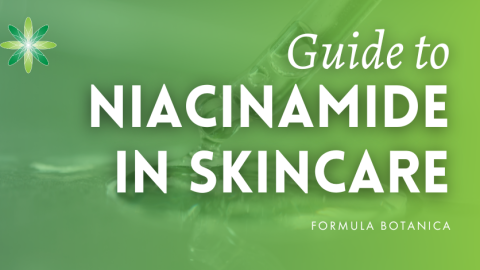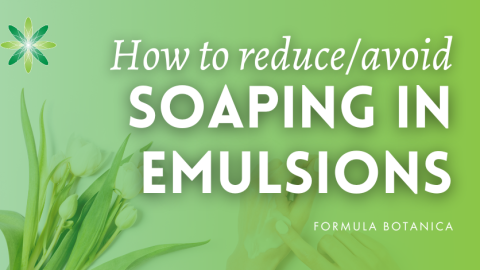Have you ever wondered what the best plants for skin care are or been tempted to try to grow natural skin care plants yourself? Many of our students and graduates do grow their own plants for use in their cosmetic products and it is a trend we’ve seen on the rise in the Formula Botanica community. We have also seen the farming of natural skincare plants taken to the next level with biodynamic farming practices.
The sustainable growing and harvesting of plants and the protection of wild plant habitats is very close to our heart. Formula Botanica is very proud to be a corporate member of Plantlife International – the UK-based charity that works internationally to give wild plants a voice and protects them all around the world through various conservation projects. We’ve been a member since 2014. You can find out more about our involvement with Plantlife as well as help us grow the Formula Botanica forest with another charity we support – Tree Sisters – in our post on our charitable donations. We believe that using plants in cosmetics is wonderful, but many of those plants also need protecting.
What we love about natural skin care plants is the way they connect us to the countryside and land and remind us that organic skin care from wild foraged plants was what our ancestors used. In this blog post we’re excited to share the advice of Dr. Trevor Dines, Botanist and Conservationist at Plantlife. Trevor talks about three wild herbs that are frequently used in organic skincare.
The list of plants used in cosmetics and that you can grow in your part of the world will vary. But we hope these insights will inspire you to explore how to grow some natural skincare plants for yourself. Even if you’ve a small patio and a few pots, there are a good many herbs you can grow – like the chamomile mentioned below.
3 Wild Plants Used for Beauty
Comfrey
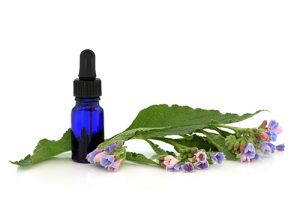
Comfrey grows quickly and is a very hungry plant, relishing deep, fertile and moist soil. It’s a perfect plant for damp soil next to a pond, but will grow in drier soil as well.
Container-grown plants are best established by planting in early spring or autumn, or plant divisions of rhizomes in autumn, burying them so their tips are an inch below the soil surface. Large clumps can be lifted and divided in spring or autumn. Plants are vigorous and long-lived, and can be difficult to eradicate if you want to move them elsewhere!
Two types are commonly grown, the UK’s native common comfrey (Symphytum officinale) and Russian comfrey (S. x uplandicum) which is a hybrid between common comfrey and rough comfrey (S. asperum).
Comfrey is an easy plant to grow and is superb for bees - expert tips by @Love_Plants #skincare Share on XDog rose
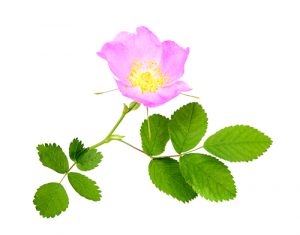
Loving sun and a well-drained soil, they’re great for including in a wildlife hedgerow, where they can scramble up and over hawthorns and blackthorns. Or plant them at the edge of a shaded woodland where they can reach into the trees.
The best way to grow them is to choose a plant with lots of flower and good colour in a local hedgerow and collect a few hips from that plant in the autumn. Split the hips open, remove the seeds and plant them in soil-based compost to a depth of about 1cm. Leave in a cool place outside over winter and seedlings should germinate in the spring. Pot on and plant out the following autumn.
Alternatively, with the landowners permission, take hard-wood cuttings of your chosen rose in autumn, cutting lengths of stem about 6” long and planting them 5” deep in a shaded trench in the garden. Plants can be moved to their final location the following autumn.
Dog rose is perfect in a wildlife hedgerow - expert tips by @Love_Plants #skincare Share on XChamomile
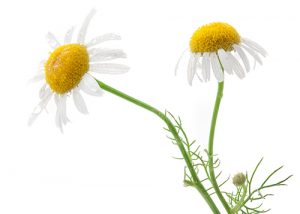
Both leaves and flowers are used, usually as a tincture or tea, as a remedy for several complains such as headaches and insomnia, and the plant has been shown to contain active compounds with antiseptic and anti-inflammatory properties.
Wild populations of Chamomile have declined considerably and the species is now regarded as vulnerable to extinction. Most of these have been lost through ploughing, drainage and the cessation of grazing.
It’s now mostly found in parts of southern England where it grows in damp, acidic grassland, especially on commons, cricket pitches and pastures where grazing or mowing keeps the sward short and open.
In the garden, chamomile prefers well drained, neutral to acidic soils in a sunny spot and can be grown in pots, herb gardens and open borders. It’s popular grown as a lawn, indeed, the variety ‘Treneague’ selected for this purpose doesn’t flower and stays low. Chamomile can be grown from seed sown in spring or propagated by division in autumn. Grow on borders or rockeries in full sun or partial shade.
Wild populations of chamomile are in decline - expert tips by @Love_Plants #skincare Share on X
These three plants that are common in northern Europe are just examples to inspire you. The list of plants used in cosmetics that you could grow or even wild harvest in your own particular region is probably vast. Remember to always check local laws on wild foresting and harvesting to ensure you forage sustainably and mindfully.
Do you grow skincare plants? Which ones do you prefer? Tell us your experiences below!
Follow Trevor on Twitter or to find out more about Plantlife, including how you can become a member, please visit Plantlife.org
A farmer’s son from Hampshire, Trevor gained his PhD in botany at Bangor University. He the co-authored the New Atlas of the British and Irish Flora, organising fieldwork and the collection of over nine million botanical records to map every native and naturalised plant in these islands. In 2002 he established Plantlife Cymru, the charity’s office in Wales, implementing the Back from the Brink programme of species conservation. He is currently Plantlife’s Botanical Specialist, appearing on BBC News, Springwatch and The One Show as well as campaigning for better management of road verges and delivering HRH The Prince of Wales’ vision for a meadow in every county through the Coronation Meadows project. Trevor has also presented Channel 4’s Wild Things and wrote a book A Guide to the Changing Plant Life of the British Isles to accompany the series.
Leave us a comment
Lorraine Dallmeier is a Biologist, Chartered Environmentalist and the CEO of Formula Botanica, the award-winning online organic cosmetic science school. Read more about Lorraine and the Formula Botanica Team.


